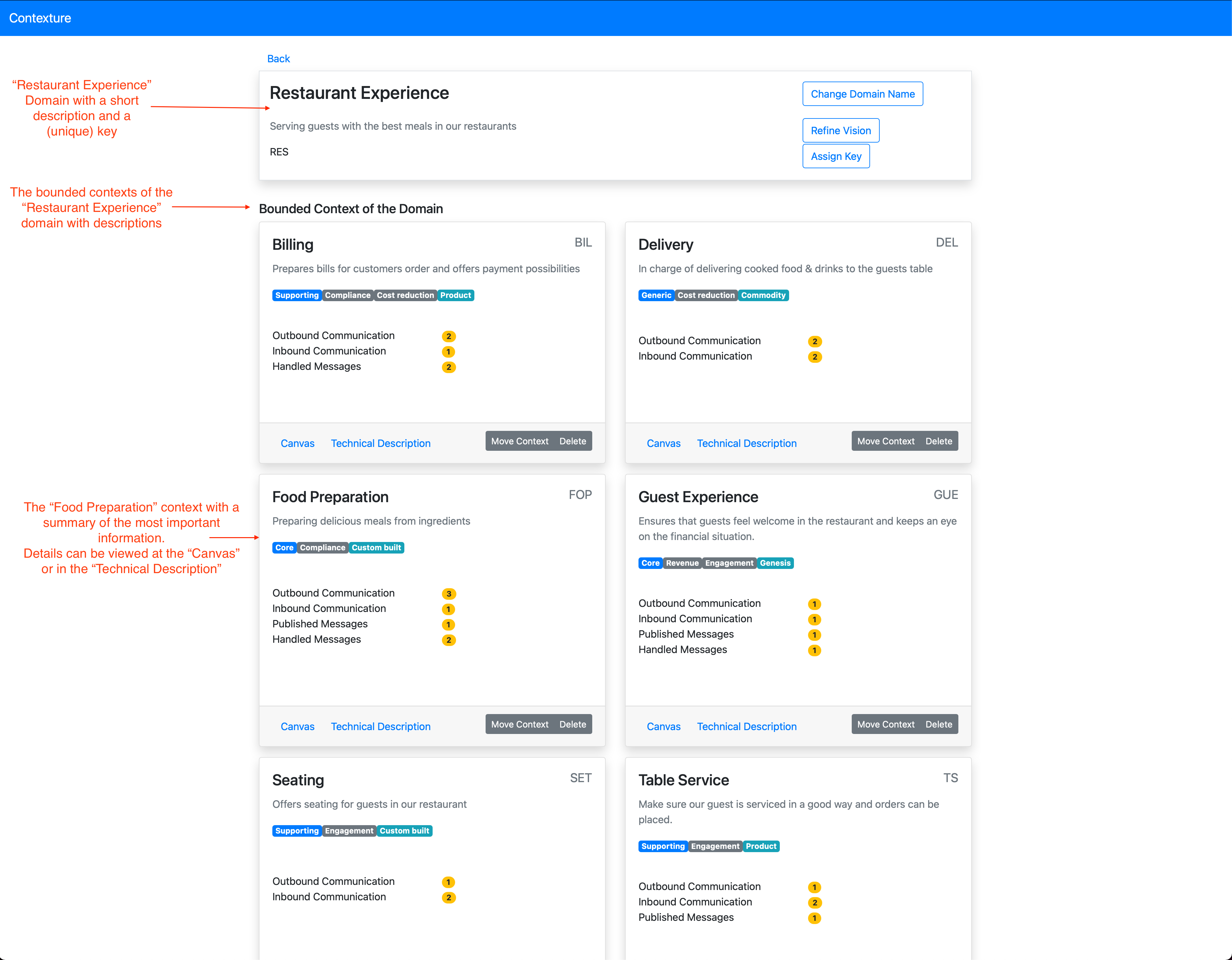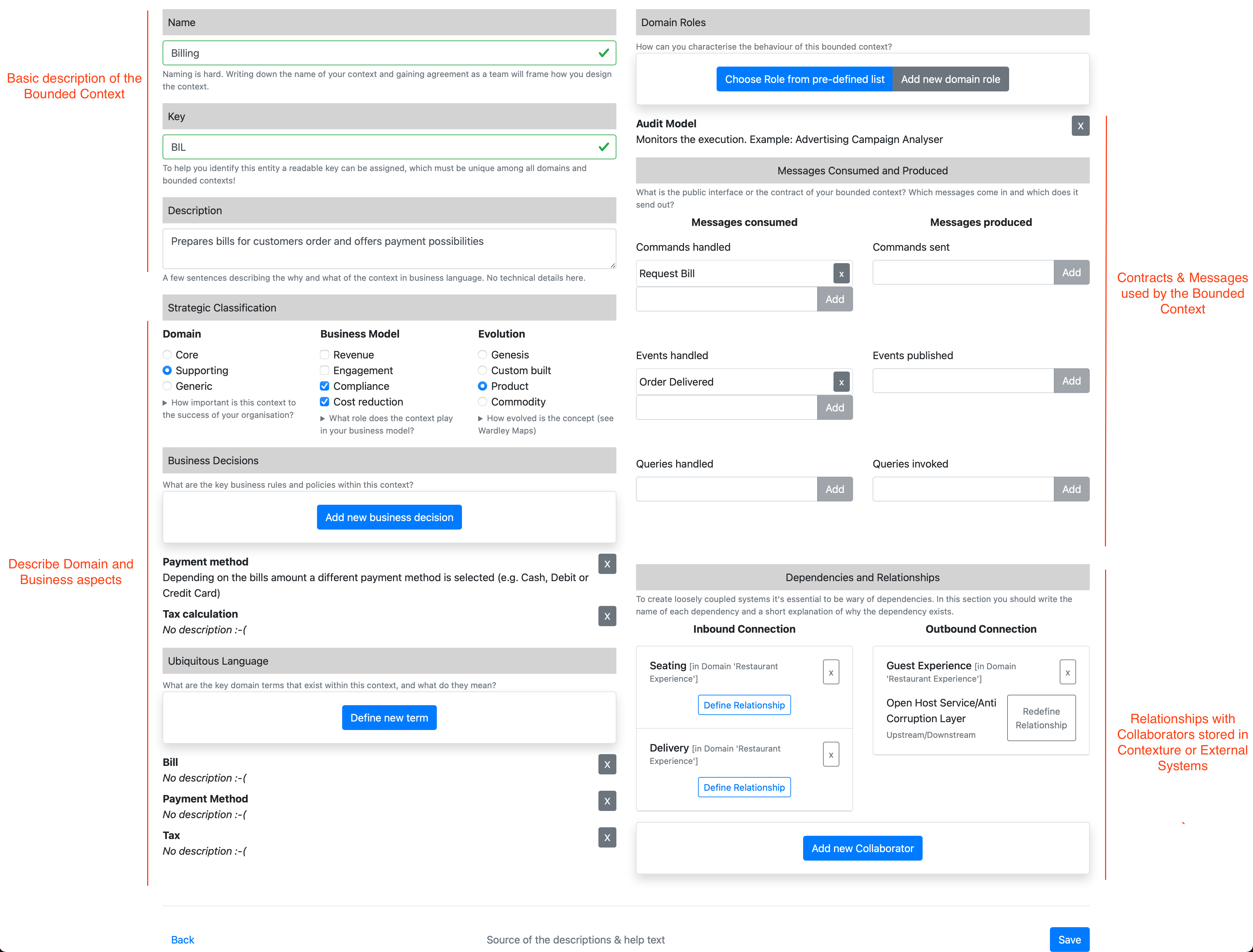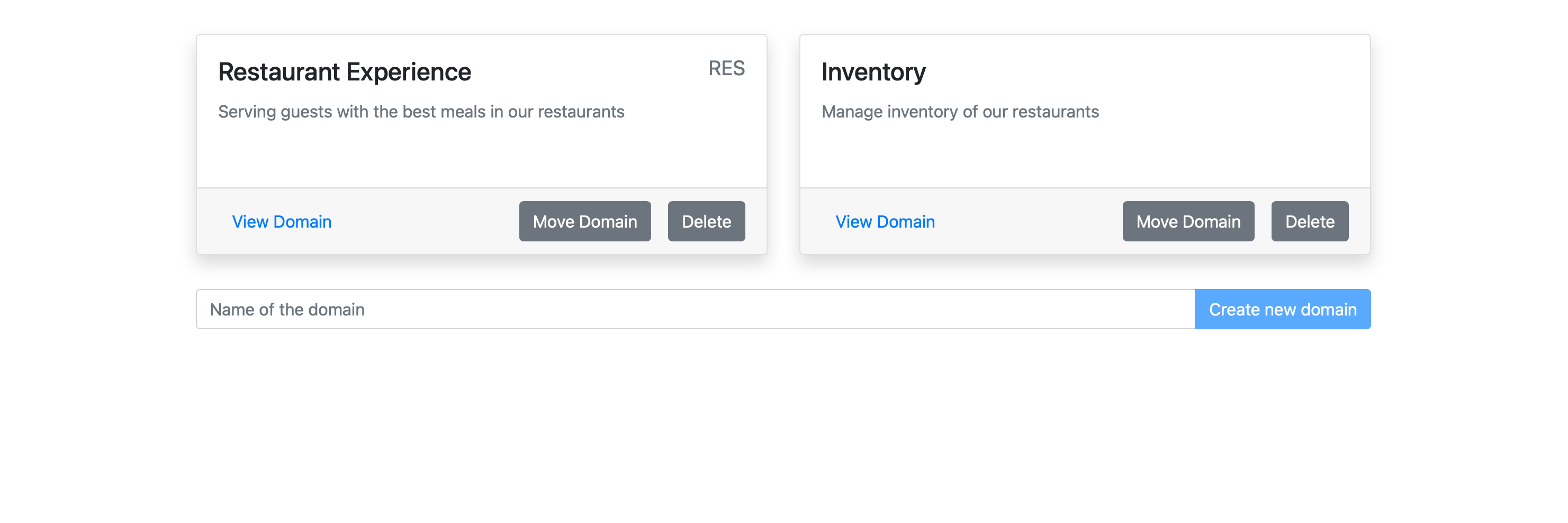The Bounded-Context-Canvas (BCC) was introduced by Nick Tune as a tool to document and visualize contexts and their connections in a system. The canvas can be used to certain document business aspects, the most important behaviors and interactions of a bounded context with other parts of the system. Reading and understanding an existing canvas is simple, even for people who are not familiar with concepts from Domain Driven Design. In order to create a new BCC, you need to understand a lot of concepts from DDD and filling in all the fields is not a simple task.
While other ways to build a BCC exist, we are building an application to support this modeling process with a dedicated tool developed with an DDD mindset. You can read about the ideas of Contexture in the concept and you can view the current status of the application at https://contexture.azurewebsites.net/ (be careful: don't store any sensitive data there; everything you store will be deleted upon the next deployment.)
Note:
We think that most of the domain modelling should happen in a collaborative way, by using whitepaper, Post-ITs or online collaboration tools. Contexture is and will not be the right tool or a replacement for these interactive modelling sessions! But Contexture might be useful to capture, document and structure some of the insights after a modelling session and make them accessible and shareable with other people!
Imagine you work with a company that owns a restaurant chain which cares about giving the guest a great experience. The restaurants are equipped with different IT systems, which support the staff to execute their tasks. The example can be seen at https://contexture.azurewebsites.net/ and the following screenshots give a short summary / explanation
An overview on the Bounded Contexts of the "Restaurant Experience" domain

A detailed view of the "Billing" Bounded Context with the help of the Bounded-Context-Canvas-v3

The Contexture server implements a simple storage backend that exposes a file system backed API and serves static assets through a Giraffe F# application.
Contexture server will listen on port 5000 per default and use data/db.json as default database file.
If you want to have the server listening on any other port, set the environment variable ASPNETCORE_URLS=http://*:8080 to the desired port.
To choose a different database file configure the DatabasePath configuration via an environment variable.
Note: you might need to exclude launch-profiles on start via --no-launch-profile.
cd backend
dotnet run --project Contexture.Apicd backend
dotnet run --configuration Release Contexture.Api/Contexture.Api.fsproj --output artifactsRun the published version of the backend:
cd artifacts
ASPNETCORE_URLS=http://*:8080 DATABASEPATH=data/mydb.json dotnet Contexture.Api.App.dll
corsis configured to allow all origins- no logging built in
- no UI for Namespace-template administration.
Use the following
curlcommands to manage templates:-
get templates
-
create a template
curl -X POST
-H "Content-Type: application/json"
-d '{ "name":"barfoo", "description":"my awesome namespace", "labels": [ { "name": "first label", "description":"some description", "placeholder": "some placeholder value"}]}'
http://localhost:5000/api/namespaces/templates -
add a label template to an existing namespace
curl -X POST
-H "Content-Type: application/json"
-d '{ "name":"barfoo", "description":"some description", "placeholder": "some placeholder value"}'
http://localhost:5000/api/namespaces/templates/ -
delete a label from a template
curl -X DELETE http://localhost:5000/api/namespaces/templates//labels/
-
delete a namespace
curl -X DELETE http://localhost:5000/api/namespaces/templates/
-
The application is developed with Elm and connects to the backend via the API.
Make sure Node is installed and NPM is in your path.
cd frontend
npm install
npm startMake sure the backend part is reachable with its default url http://localhost:3000
To build the Docker image use the Makefile via make build-image or execute the commands manually.
To run the softwarepark/contexture image use make run-app and browse to http://localhost:3000.
Your data will be stored in the /data/db.json file on the volume /data.
Thanks to all existing and future contributors and to the following individuals who have contributed with ideas, feedback or testing:
- Nick Tune
- Peter Rosner
